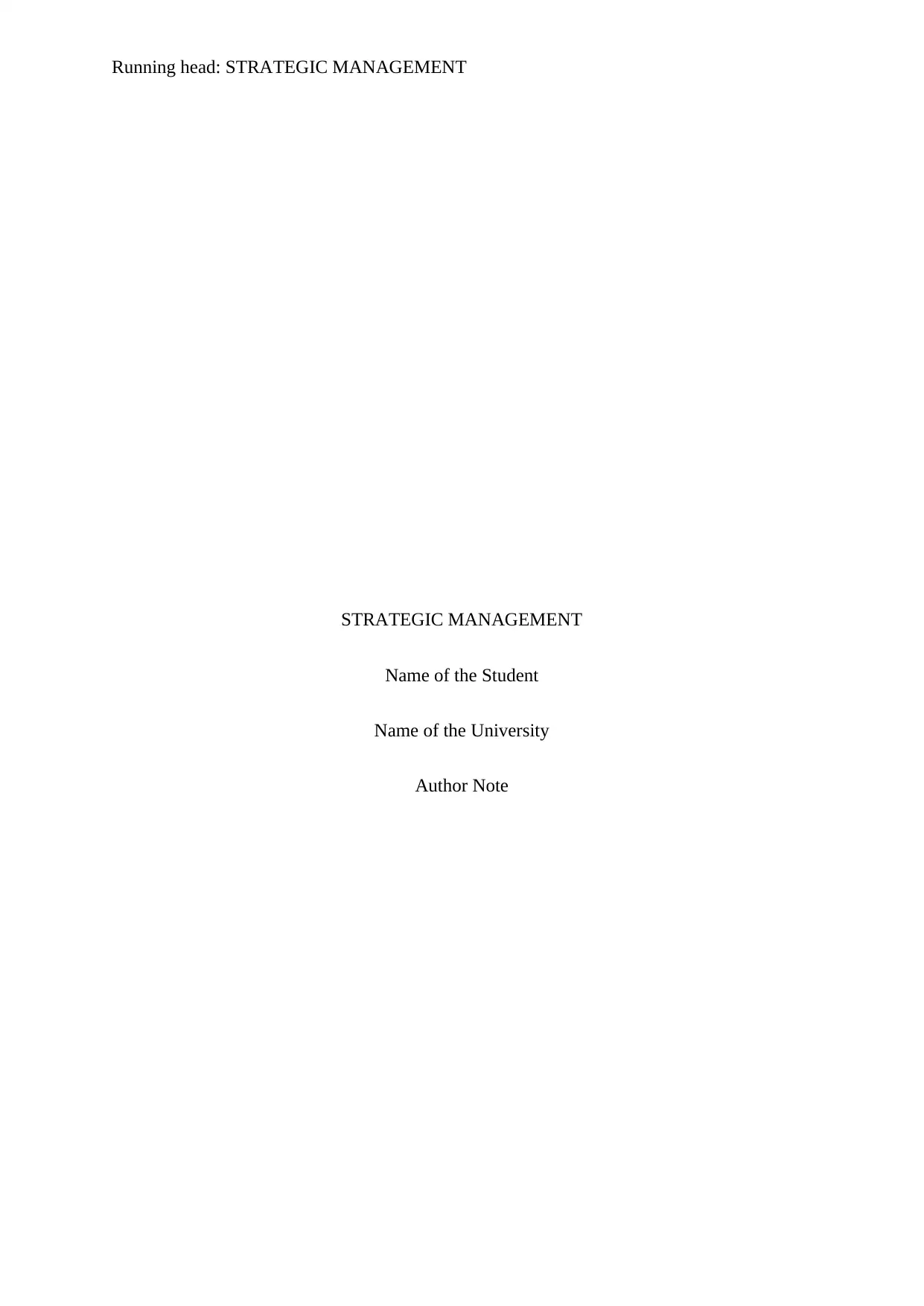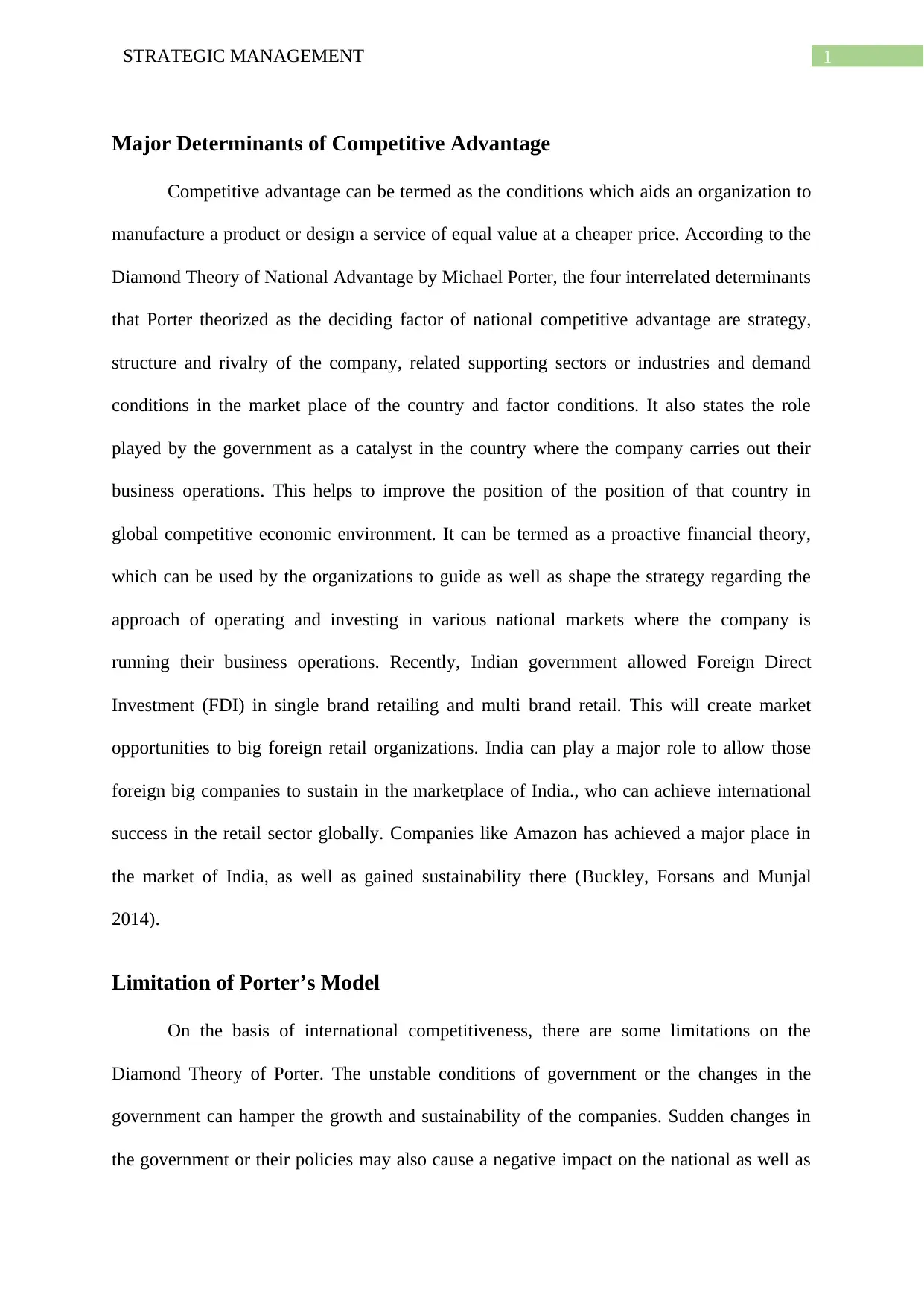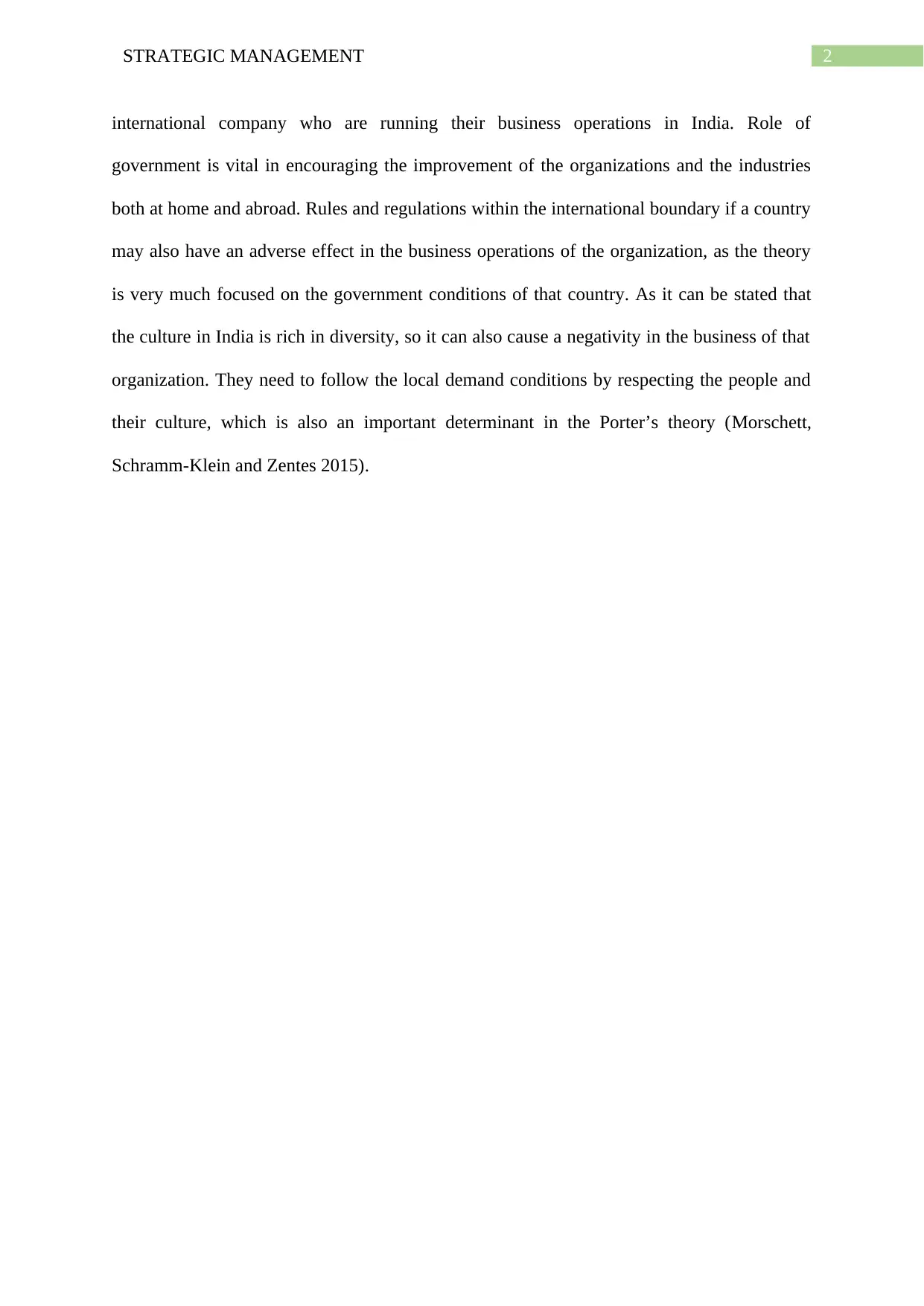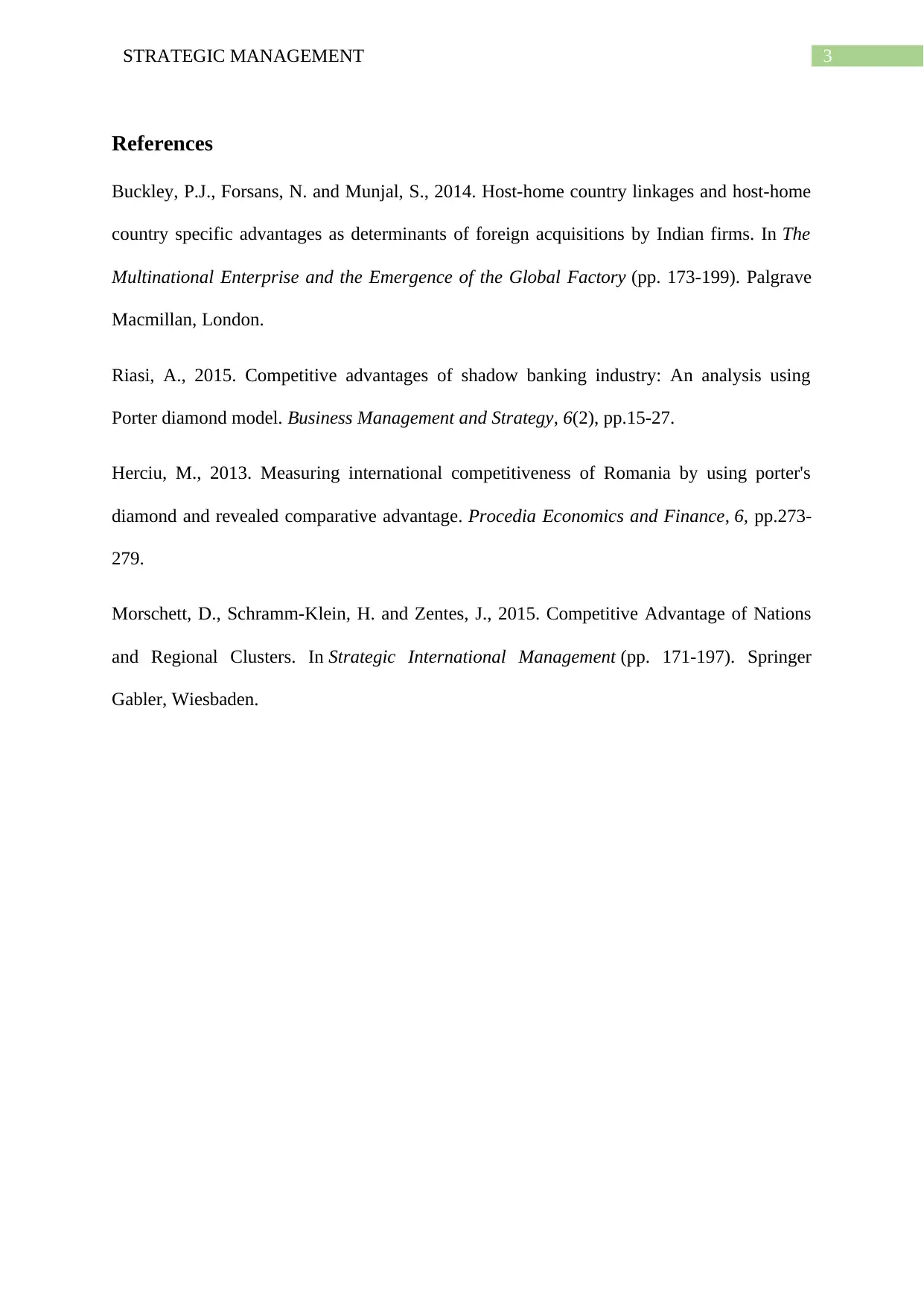Strategic Management Report: Competitive Advantage and FDI in India
VerifiedAdded on 2022/11/28
|4
|645
|107
Report
AI Summary
This report delves into the concept of competitive advantage within strategic management, focusing on the application of Michael Porter's Diamond Model. It explores the four key determinants: strategy, structure, and rivalry; related and supporting industries; demand conditions; and factor conditions, highlighting the role of government in fostering a competitive environment. The report examines the implications of Foreign Direct Investment (FDI) in India, particularly in the retail sector, and its impact on market dynamics and the sustainability of businesses like Amazon. It also discusses the limitations of Porter's model, such as the influence of governmental instability and cultural factors. The analysis emphasizes the importance of adapting to local demand conditions and respecting cultural diversity for business success. The report references several academic sources to support its findings and provides a comprehensive understanding of competitive advantage within a globalized market.
1 out of 4











![[object Object]](/_next/static/media/star-bottom.7253800d.svg)